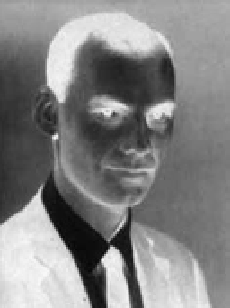Information Technology Reference
In-Depth Information
At the end of 1967, one of Davies's colleagues at NPL, Roger Scantlebury,
presented a paper on their packet-switching work at a conference in Gatlinburg,
Tennessee. Scantlebury's paper outlined a design for a packet-switching net-
work consisting of relay centers called
nodes
connected by digital links. The
nodes handled the transmission of the packets between the nodes, and
interface
computers
connected the network of nodes to time-sharing computers and to
other subscribers. It was from Scantlebury that Larry Roberts first heard about
Baran's work on packet switching (
B.10.9
). He later said of the revelation he
experienced at this conference, “Suddenly I learned how to route packets.”
12
When Roberts returned to Washington, he hunted down the RAND reports
that Baran had sent to ARPA and found time to meet with him in early 1968.
Meanwhile, back in the United Kingdom, Davies and his colleagues set about
building a small, packet-switching network at NPL. The Mark I version of the
NPL network became operational in 1970, and a Mark II version remained in
operation until 1986. Despite the similarity of their ideas, Davies always gave
credit to Baran as being the first to publish the idea of packet switching in dis-
tributed networks, saying, “The honour for [originating packet switching] must
go to Paul Baran.”
13
The ARPANET and the third university
When Licklider went to ARPA, he set out to find and fund the leading com-
puting research centers in the country. From these connections, he established
an informal circle of advisers, consisting of about a dozen computer scientists
from MIT, Stanford University, and the universities of California at Los Angeles
and Berkeley as well as from some computer companies. He lightheartedly
called this group his “Intergalactic Computer Network.” After he had been at
ARPA six months, Lick had seen firsthand the diversity and incompatibility
of all the computer hardware and software in the research community. As a
result, he wrote a memo to the group that raised the possibility of connecting
the different computing systems at each site into a network:
Consider the situation in which several different centers are netted together,
each center being highly individualistic and having its own special language
and its own special way of doing things. Is it not desirable or even necessary
for all the centers to agree upon some language or, at least, upon some
conventions for asking such questions as “What language do you speak.”. . . It
seems to me to be important . . . to develop a capability for integrated network
operation.
14
B.10.9. Larry Roberts was a gradu-
ate in electrical engineering from
MIT and went to work on research
projects at MIT's Lincoln Laboratory.
At the age of twenty-nine, he became
the project leader and chief architect
of the ARPANET. After leaving ARPA,
he moved to the communications
industry and founded the first com-
mercial packet-switching network,
called TELENET.
By this memo, Lick had extended the idea of his Intergalactic Computer
Network from just a group of people to a network of interoperating hardware
and software.
When Bob Taylor (
B.10.10
) became director of the computing program at
ARPA in 1966, he inherited this vision of Lick's. Obtaining the funding for such
a network was only the first hurdle for Taylor. He now needed a program man-
ager who could actually build the network, and he knew exactly the person
he wanted. Taylor had just funded an experiment to connect the TX-2 com-
puter at MIT's Lincoln Laboratory to the System Development Corporation's

Search WWH ::

Custom Search